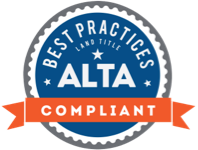Obsolete Agreements and How They Can Affect Modern Development
New York is filled with properties that have long-forgotten restrictions, covenants, and agreements, sometimes from centuries ago. Just because those issues are old doesn’t mean they can be ignored.
Cornerstone Insights: Peter M. Carrozzo, Chief Counsel
In the mid-19th century, what was then the Brooklyn City Railroad (BCRR), the largest trolley service in Brooklyn, merged and was reorganized into the Brooklyn Rapid Transit Company, and eventually the Brooklyn Manhattan Transit Company (the BMT) in 1923. By 1940, it was part of the New York City Subway System.
This would be only a dusty bit of history except for one document: an agreement signed in 1892 that allowed the company to alter existing roads to install overhead trolley lines. Many utilities that were once private and are now public (under different names) or are long gone have similar agreements.
This one, as with many utilities, had the potential to significantly restrict the prospective development of a certain lot in Brooklyn. In fact, many agreements that were originally written to allow pipes, wires, gas lines, poles, or other utilities can significantly restrict potential new construction.
On a case-by-case basis, we research the relevance of covenants, restrictions, easements, and agreements on title by looking at the original holder and purpose of those agreements. If the holder no longer exists, there is no successor, and the purpose is deemed moot, expired, or unnecessary, then these agreements will not be considered obstructions to title.
Before considering a purchase, we highly recommend conducting a preliminary search for covenants, restrictions, easements, and agreements on title. Some of them are buried deep in history.
If you have any questions about obsolete covenants, restrictions, or agreements, or if you would like to discuss an upcoming or prospective transaction, please contact us.




